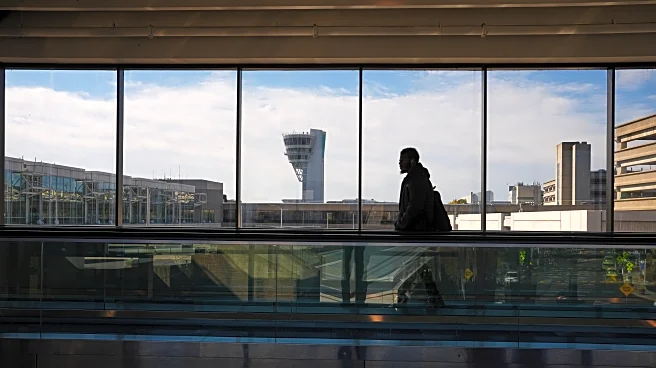What's Happening?
The Trump administration has announced plans to reduce air traffic by 10% at 40 major U.S. airports due to the ongoing government shutdown. This measure is intended to alleviate the strain on air traffic controllers
who are working without pay, many of whom are pulling overtime shifts. The reductions are expected to start at 4% tomorrow and increase to 10% by next week. While the specific airports affected have not been officially announced, preliminary discussions include locations in New York, Washington, Atlanta, Chicago, Los Angeles, and Seattle. Airlines have begun canceling flights at some of the nation’s busiest airports in anticipation of the mandate, which could impact hundreds of thousands of travelers.
Why It's Important?
The planned flight reductions are significant as they highlight the impact of the government shutdown on essential services, such as air traffic control. This decision could have widespread implications for the airline industry, potentially leading to financial losses and logistical challenges. Travelers across the country may face disruptions, affecting both personal and business travel plans. The move underscores the broader consequences of the shutdown on federal employees and the services they provide, raising concerns about the sustainability of operations under prolonged financial strain.
What's Next?
If the government shutdown continues, the flight reductions will be implemented progressively, starting with a 4% cut and escalating to 10% by next week. Airlines are likely to adjust their schedules and may offer waivers for cancellation and change fees to accommodate affected passengers. The situation may prompt further discussions among lawmakers and industry leaders about resolving the shutdown to restore normal operations. Stakeholders, including airport authorities and airline companies, will need to coordinate closely to manage the impact on travelers and maintain safety standards.














